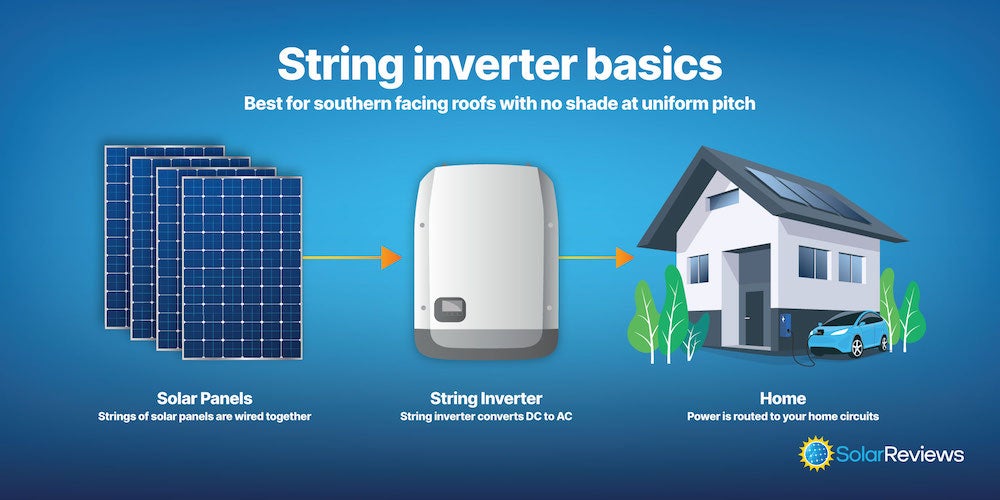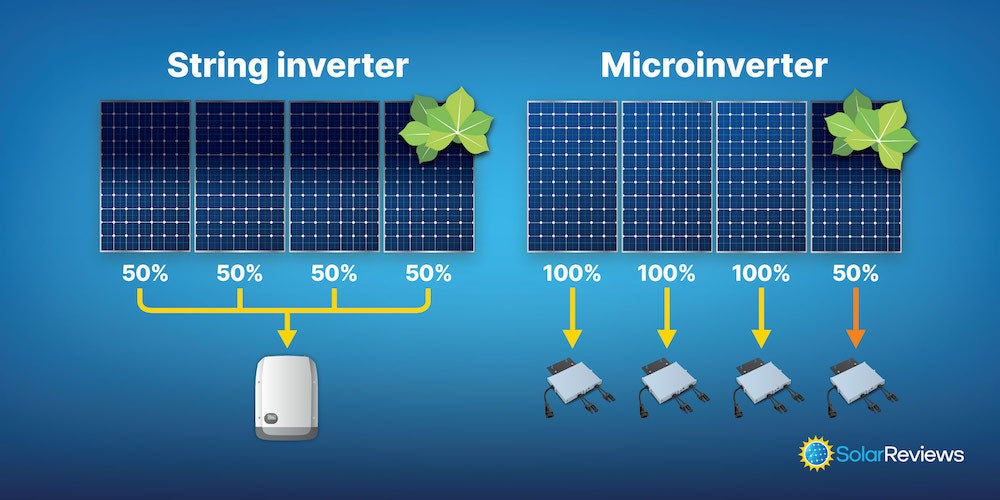Are solar micro inverters better?
Hey there! If you’re considering going solar, one important decision you’ll need to make is whether to go with string inverters or microinverters. These nifty devices are responsible for converting the direct current (DC) generated by your solar panels into the alternating current (AC) that powers your home.
But what’s the difference between the two, and how do they stack up against each other? Let’s dive in and find out!
Understanding String Inverters
Picture this: a standalone box, usually located near your main service panel and electricity meter—that’s a string inverter. In most residential solar installations, you’ll find either a single inverter or possibly two, depending on the system’s size.
These string inverters work in a series circuit, with about 6 to 12 solar panels connected together in what we call a “series string.” One of the leading manufacturers of string inverters is SMA and PSC SOLAR UK.

The Upside of String Inverters
Troubleshooting Made Easy: The beauty of a string inverter lies in its simplicity. Since you only need one of these bad boys to convert DC electricity to AC power, it’s much easier to pinpoint and fix any issues that may arise in your solar system. When something goes wrong, you won’t have to go on a wild goose chase.
Cost-Effective Choice: Installing a single-string inverter is a wallet-friendly option compared to microinverters. With fewer labor hours and a lower price tag, string inverters make solar more affordable for many homeowners.
Less Wiring Hassle: Since there are fewer connections involved between solar panels and the string inverter, the chances of wiring mishaps are significantly reduced. Say goodbye to improper cabling headaches!
The Downside of String Inverters
Partial Shade Efficiency: Here’s the catch with string inverters. Since they rely on solar panels being wired in series, if one panel’s output is affected (let’s say it’s shaded for part of the day), the entire string of panels is affected equally. So, shading can be a real buzzkill for string inverters.

Limited System Expansion: If you plan on expanding your solar array down the road, brace yourself for some complexity. String inverters thrive when they operate near their peak capacity. So, to ensure optimal performance, additional panels will require a separate string inverter. That means more components, more wiring, and more cost.
Shorter Lifespan: String inverters generally come with warranties of 8 to 12 years, while their microinverter counterparts boast a 25-year warranty. It’s like comparing a sprinter to a marathon runner—string inverters have a shorter race to run.
Monitoring Limitations: Unfortunately, with a string inverter system, you won’t be able to keep an eye on the performance of individual panels. While you can view aggregate solar production, detecting issues with specific panels, such as cracks, defects, or debris, becomes a bit of a blind spot.
Introducing Microinverters
Now, let’s shift gears and talk about microinverters. These little guys perform the same essential function as string inverters but with a twist.
Instead of having one central inverter, microinverters are installed beneath each solar panel on your roof.
Enphase, a leading manufacturer, has been at the forefront of microinverter technology since 2009, constantly improving its products for maximum solar PV production.
The Perks of Microinverters
Rapid Shutdown Capability: Safety first, my friend! Microinverters comply with the latest electrical codes that require solar systems to shut down quickly. This ensures the safety of first responders or firefighters when they need to work on rooftops or handle power lines.
Maximized Electricity Production: The big advantage of microinverters lies in their ability to make the most out of each individual panel’s production. Unlike string inverters, which limit electricity production based on the lowest-performing panel, microinverters work in parallel. This means that each panel can shine at its brightest, contributing as much power as possible to the grid.
Ideal for Challenging Installations: Got panels facing multiple orientations or dealing with shading issues from trees or a large chimney? Microinverters to the rescue! These nifty devices accommodate variations in electricity production throughout the day, ensuring you harvest all that sun-kissed energy. Standard inverters might leave you in the shade.
Extended Lifespan: Microinverters come with robust 25-year warranties, proving that the technology has come a long way. Manufacturers now stand confidently behind their products, so you can expect them to go the distance.
Panel-Level Monitoring: With micro inverters, you can play detective and monitor the production of each individual panel. Keep an eye out for any underperforming panels or issues that might hinder your solar energy output. It’s like having a solar watchdog on your rooftop.
System Expansion Made Easy: Planning on expanding your solar system in the future? No worries! Microinverters can be seamlessly added one at a time. Adding panels and microinverters to your existing setup is a breeze, without the hassle of purchasing and installing additional string inverters.
Making the Right Choice for Your Home
Now, let’s get down to business. Which option is best for you?
Well, here’s the scoop: we generally lean toward power optimizers and string inverters. They strike a good balance between meeting rapid shutdown requirements, cost-effectiveness, and ease of troubleshooting.
But hey, if your roof is as complex as a labyrinth or shading issues are casting a shadow on your solar dreams, microinverters might be your knight in shining armor.
However, don’t be swayed by popularity alone. Before making a final decision, explore all your options, consider your unique circumstances, and consult with a trusted solar professional. They’ll help you make an informed choice that aligns with your needs and maximizes the benefits of solar power.
So, there you have it—string inverters and microinverters, duking it out in the solar energy arena. Remember, the power is in your hands, or rather, on your roof. Choose wisely and let the sun do its magic!
FAQs
- What is the main difference between string inverters and microinverters?
- String inverters are centralized devices that convert the DC electricity generated by multiple solar panels wired in series into AC power. Microinverters, on the other hand, are installed beneath each individual solar panel and convert the DC electricity produced by each panel into AC power.
- Which option is better for a system with shading issues?
- Microinverters are generally more suitable for systems with shading issues. Unlike string inverters which can be significantly affected by shading on one panel, microinverters allow each panel to operate independently, maximizing electricity production even in shaded areas.
- Can I monitor the performance of individual solar panels with both types of inverters?
- Yes, you can monitor the performance of individual solar panels with microinverters. Each microinverter is equipped with monitoring capabilities, allowing you to track the production of each panel separately. With string inverters, however, monitoring is typically limited to the overall system output.
- Which option is more cost-effective?
- String inverters are generally more cost-effective compared to microinverters. They require fewer components and less wiring, making the installation process simpler and more affordable. Microinverters tend to have a higher upfront cost due to their individualized nature.
- Can I expand my solar system with both types of inverters?
- Expanding a solar system is generally easier with microinverters. You can add panels and microinverters to your existing setup one at a time without the need for additional string inverters. With string inverters, adding more panels usually requires the installation of a separate string inverter, which can be more complex and costly.
Remember, these FAQs provide a basic understanding of string inverters and microinverters, but it’s always advisable to consult with a solar professional to determine the best option for your specific circumstances.

